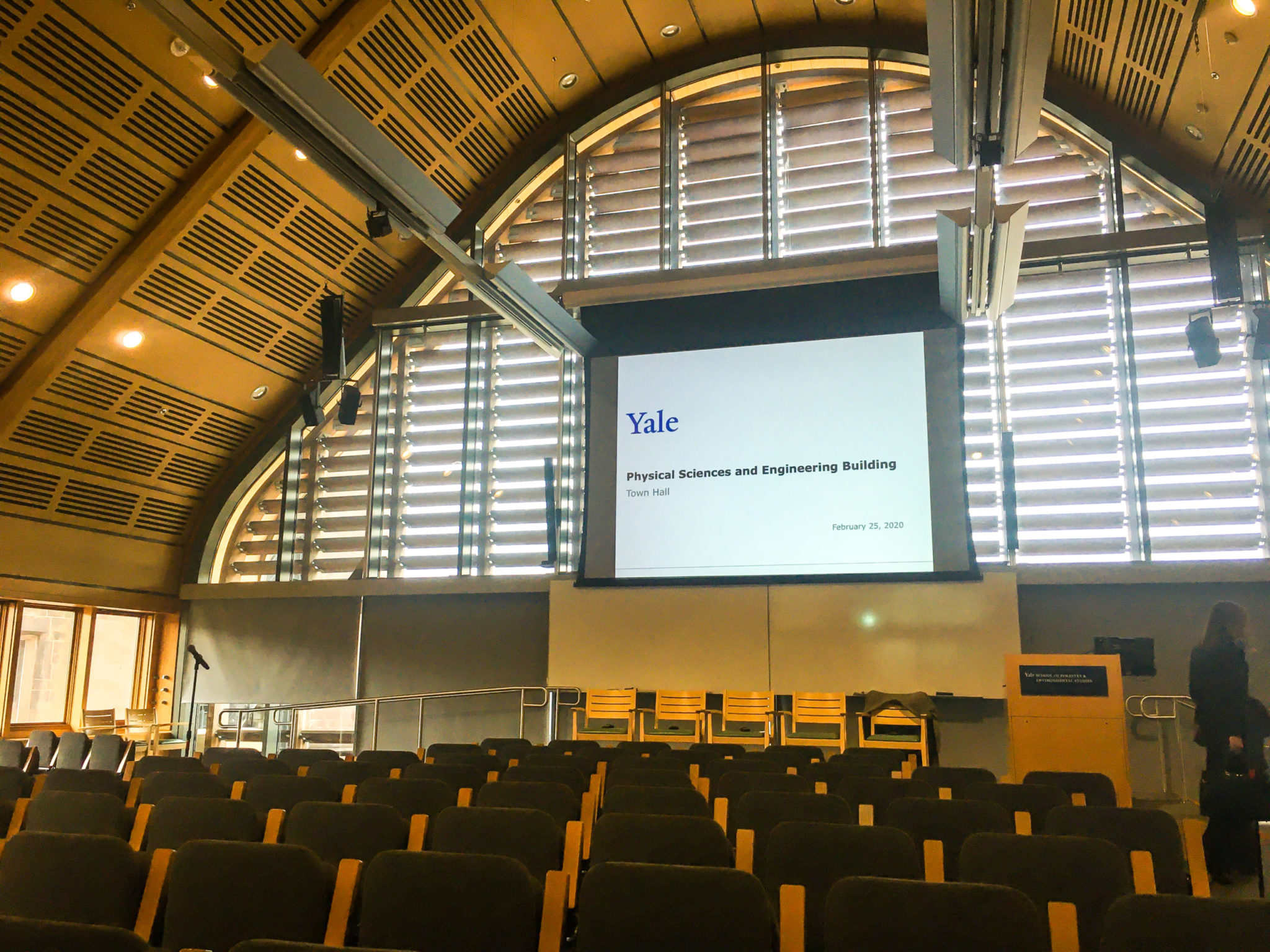
Giovanna Truong
University Provost Scott Strobel presented preliminary plans for the upcoming physical sciences and engineering building to a full audience in Kroon Hall’s Burke Auditorium last Tuesday.
To several rounds of applause, Strobel showed the audience slides of artistic renderings of the new building — tentatively set to open in 2026 — and presented lists of committee members before opening up the town hall for discussion. The building, another installment in a series of campus expansions, will be located on Science Hill, north of the Bass Center and west of Kline Chemistry Laboratory, according to Strobel. Dubbed PSEB, the project will follow up on the 2018 Report of the University Science Strategy Committee, which identified “Quantum Science, Engineering and Materials” as “ideas for top-priority investment.”
“We have been looking to create state-of-the-art space for these initiatives in quantum and instrumentation,” Strobel said. “This is a really exciting day.”
Strobel shared the auditorium with a panel of presenters, including Physics Department Chair Karsten Heeger, Dean of the Faculty of Arts and Sciences Tamar Szabó Gendler, Associate Provost for Research Lisa D’Angelo and Dean of the School of Engineering and Applied Science and FAS Dean of Science Jeffrey Brock.
In attending to one of the USSC’s five areas of top priority, Strobel said the PSEB will also address an area in need of “cross-cutting investments” — which include “Instrumentation Development.” Keeping up with instrumentation and creating new technical instruments, Strobel noted, allows Yale researchers to take “measurements no one else can make.”
The new building is slated to include research laboratories, interaction spaces, seminar and workshop rooms and technical facilities such as clean rooms, according to Heeger, who is leading a planning committee for the PSEB. He added that the new building would bring together groups from different departments that are all working on quantum research. According to Strobel, the departments that will move into the PSEB all currently occupy buildings that are at least 50 years old.
“[This] will really support science and physical science at Yale at all levels,” said Heeger, explaining that the building will bolster research as well as teaching.
Sterling Professor of Applied Physics and Director of the Yale Quantum Institute Rob Schoelkopf said that he thinks a physical sciences and engineering building is something the whole university has long been looking forward to.
He echoed Strobel’s excitement, adding that the move would “strengthen and reinvigorate physical science at Yale.”
“… [O]ur ability to expand our efforts and our graduate student body has been constrained by the severe space limitations here on main campus,” Schoelkopf wrote in an email. “This new building will allow us to increase our research efforts, to recruit the next generation of faculty in quantum science and engineering, and offer a great educational and research experience to more undergraduate, graduate, and postgraduate students!”
In an email to the News, Professor of Applied Physics, Physics and Electrical Engineering Daniel Prober credited Chief Investment Officer David Swensen and former University President Richard Levin with “making the changes in direction and providing the resource[s] to undertake the present plans.” Prober, who has been part of the Yale faculty for 45 years, called the venture “huge” and “ambitious,” labeling it “a very good development.”
Schoelkopf pointed out that, as Congress is allocating resources to quantum information research via the National Quantum Initiative, his research is in an “exciting and competitive field worldwide.” Yale is “leading the way,” he said, pointing to its status as a central member of the U.S. Department of Energy’s Northeast Quantum Systems Center — a “hub” for quantum information research.
Co-president of the Yale chapter of the Society of Physics Students Shoumik Chowdhury ’21 agreed that Yale “is already a pretty big player” in quantum research.
“Having a big building for it would kind of be fitting for the status that Yale has in quantum information,” Chowdhury said.
The Yale School of Engineering and Applied Science was founded in 1852, according to its website, and the Yale Physics Department was founded in the early 1800s as part of the Department of Philosophy and the Arts, according to the American Institute of Physics.
Matthew Kristoffersen contributed reporting.
Giovanna Truong | giovanna.truong@yale.edu







